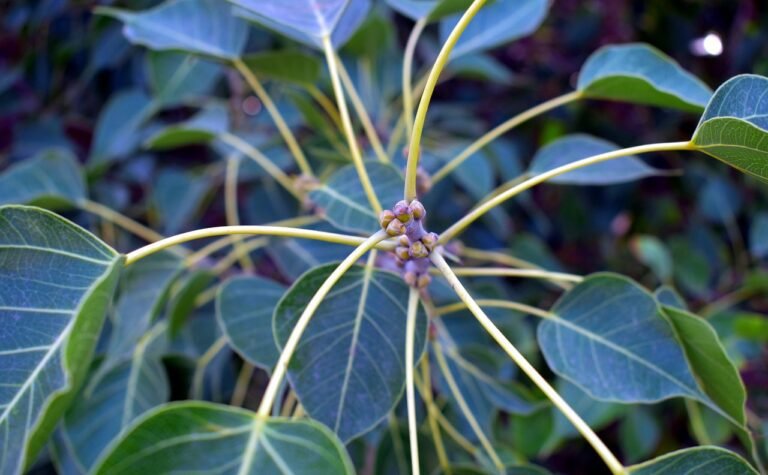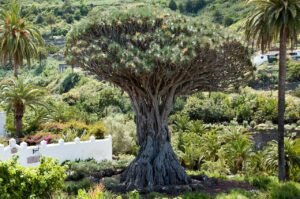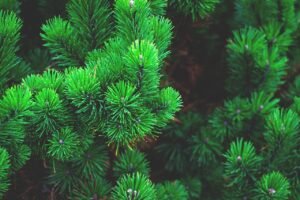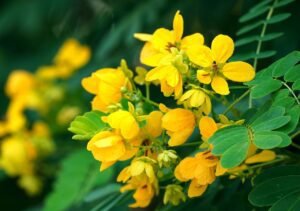
The Peepal Tree: A Biography of Nature’s Legacy
Scientific Classification
Kingdom: Plantae
Clade: Tracheophytes
Clade: Angiosperms
Clade: Eudicots
Clade: Rosids
Order: Rosales
Family: Moraceae
Genus: Ficus
Subgenus: F. subg. Urostigma
Species: F. religiosa
Binomial Name: Ficus religiosa
About
The Peepal Tree measures anywhere between 20-30(66-98 feet) in height, thereby it makes a large, deciduous, or semi-evergreen tree. The leaves of the Tree are heart-shaped and distinct in appearance, measuring anywhere between 10-17 centimeters with an unusually elongated drip tip. The small figs of the Peepal Tree are about 1-1.5 centimeters across, ripening from green through purple. it has an incredible life span of 900-1500 years, besides being one of the oldest as well as hardiest species. The Jaya Sri Maha Bodhi, a member of the original Bodhi tree under which Buddha attained enlightenment, is in Sri Lanka, and it stands today over 2250 years old.
Distribution of the Peepal Tree
The Peepal Tree originated on the Indian subcontinent, especially in countries like Bangladesh, Bhutan, Nepal, Pakistan, and of course India. Apart from these, the existence of this tree is also noticed in only parts of Indochina like Thailand, Myanmar, and Malaysia. The Peepal Tree, present in the local flora of these parts, has by now been introduced and thriving in many tropical parts of the world, which include places like these: Iran, Venezuela, and even Florida.
Ecology
The Peepal grows from sea level to an elevation of 1,520 m. It has the capacity to grow in all types of soil, but it is mostly found in deep and well-drained alluvial sandy loam soils- the Peepal tree is noted to be one of the hardiest for it can survive a wide range of different climates and withstand temperature variations from 0 to 35_C. In addition, it has an extensive root system that permits adaptations to various conditions, even those resulting from flooding. the Peepal is also understood to have a specific ecological association with the Blastophaga quadriceps wasp, which pollinates the tree.
Invasiveness of the Peepal Tree
The Peepal is often termed as an “environmental weed” in some states because of its quick growth and rapid spread. Also, the roots can penetrate the trunk of the host tree, causing it to split from the inside resulting in death of host tree quite often. The risk of invasiveness is very high with Peepal Tree; it has also been targeted as a potential pest to monitor the growth in regions such as Hawaii.
Cultural and Religious Significance
It still holds great cultural and religious importance in India, where the tree is venerated by Hindus, Jains, Sikhs, and Buddhists. A symbol of enlightenment considered peaceful. The tree is sacred in Hinduism, and the trees are connected with Vishnu. Besides, this tree has a very close connection with Gautama Buddha because it is said that Gautama attained enlightenment under the branches that include this tree in Bodh Gaya, India. So, this tree of Peepal is also called the Bodhi Tree in Buddhist tradition.
The Peepal is worshipped by the Hindus as the king of trees, where devotees would do pradakshina around the tree in honor of that. The spiritual significance is enhanced, as the tree is further associated with Lord Vishnu. For Buddhists, the Peepal Tree is known as the Bodhi Tree, and wherever he achieved enlightenment is among the most sacred places in Buddhism. So people travel from across the globe to pay religious homage to the Peepal Tree at Bodh Gaya.
The peepal is a tree of more than just its religious and spiritual value. Its leaves are used for crafting purposes; its trunk is utilized for soil leveling for agricultural practices. This is a tree that holds promises of medicinal properties, even today sought after for the treatment of myriad ailments by traditional practitioners such as asthma, diabetes, and gastrointestinal tract conditions.
The Peepal is a much-grown tree in the tropics and subtropics to reap aesthetic and environmental benefits. It is fond of full sunlight and places such as parks and gardens would suit this tree rightly. Peepal can grow in all types of soils although loamy are best. Although being grown indoors in pots is possible, the percolation is ideal in an outdoor plant.
Environmental Benefits
The peepal provides habitat for different wildlife such as birds and insects. Its thick canopy creates shade while its strong roots help to prevent soil erosion. This drought-resistant species has the capacity to tolerate dry conditions and hence makes it vital for urban settings.
The Peepal Tree symbolises spirituality and enlightenment; it is a type of tree that has immense value in its practical, environmental, and medicinal benefits. Religious ceremonies, traditional medicine, and landscaping-the Peepal Tree occupies a prominent position within various cultures around the world.




